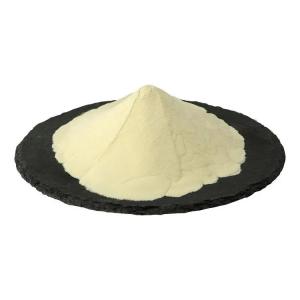Phosphatidyl serine is found in food sprays.
Time:2025-08-13Phosphatidylserine (PS) is a naturally occurring phospholipid that forms part of cell membranes in plants and animals. Commercially, it is often sourced from soybeans or sunflower lecithin and refined into concentrated forms suitable for use in dietary and functional products. In recent years, PS has been incorporated into food spray formats, offering a convenient delivery method for both consumer and industrial applications.
Physical and Chemical Properties
Phosphatidylserine is amphiphilic, with both hydrophilic and hydrophobic characteristics. This dual nature allows it to be dispersed in emulsions when combined with suitable stabilizers. However, PS is sensitive to oxidation and hydrolysis, meaning its incorporation into a spray formulation requires careful protection against environmental factors such as heat, light, and oxygen.
Formulation in Food Sprays
In spray-based products, PS is usually incorporated as part of an oil-in-water emulsion. The oil phase contains phosphatidylserine and possibly other lipids, while the water phase carries flavor components, preservatives, and stabilizers. Common formulation steps include:
Emulsification – High-shear mixing or homogenization ensures even dispersion of PS in the base matrix.
Stabilization – Emulsifiers such as lecithin, pea protein, or gum arabic can help maintain stability.
Aerosol Packaging – The product can be packaged with propellants in pressurized containers, or designed as a non-pressurized pump spray.
Applications
Phosphatidylserine-containing food sprays can be used in several contexts:
Functional food enhancement – Spraying onto baked goods, snacks, or cereals to add targeted nutritional components.
Beverage enrichment – Adding to smoothies, protein shakes, or hot drinks at the point of serving.
Ready-to-eat food finishing – Spraying over salads, pasta, or cooked meals as a flavor and nutrient layer.
Industrial applications – Uniform coating of PS onto food surfaces during manufacturing without manual mixing.
Packaging and Stability
To preserve PS quality in food sprays, opaque or UV-blocking containers are recommended. In aerosol systems, inert gas propellants such as nitrogen can help reduce oxidation. Refrigerated storage or inclusion of natural antioxidants (e.g., tocopherols) further prolongs stability.
Advantages of the Spray Format
Precise dosage control through metered spray delivery.
Uniform distribution across the food surface without clumping.
Convenience for both home and industrial use, eliminating the need for mixing.
Customizable sensory profile, as the spray can be flavored or unflavored depending on application.
Conclusion
Incorporating phosphatidylserine into food sprays combines the functionality of a specialized phospholipid with the convenience of a user-friendly delivery format. By applying proper formulation techniques and packaging strategies, manufacturers can create stable, appealing, and versatile PS-enriched sprays for both consumer and commercial markets.


 CN
CN





